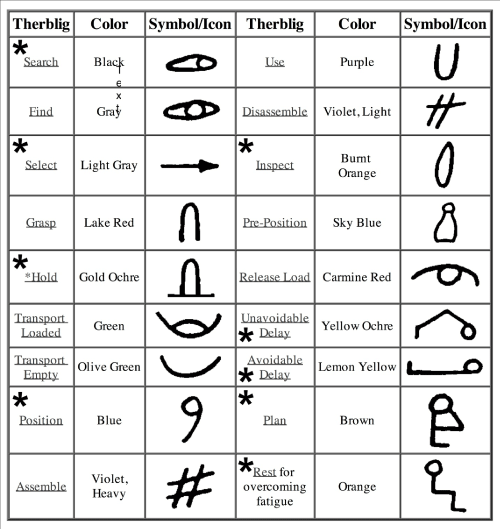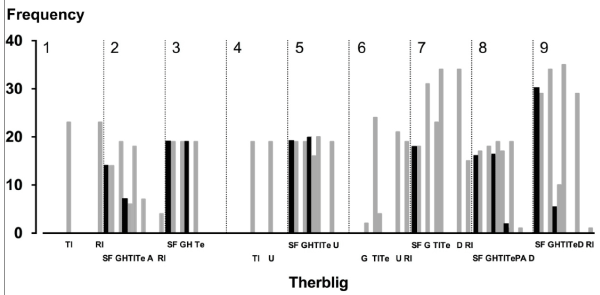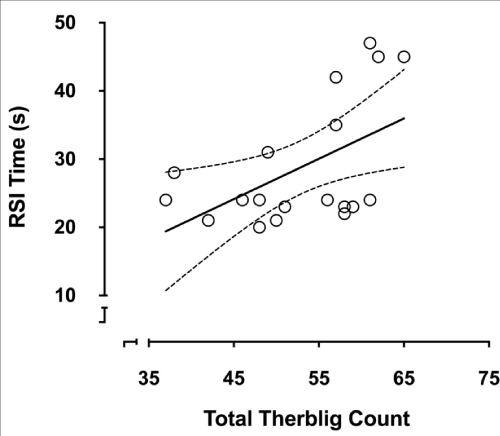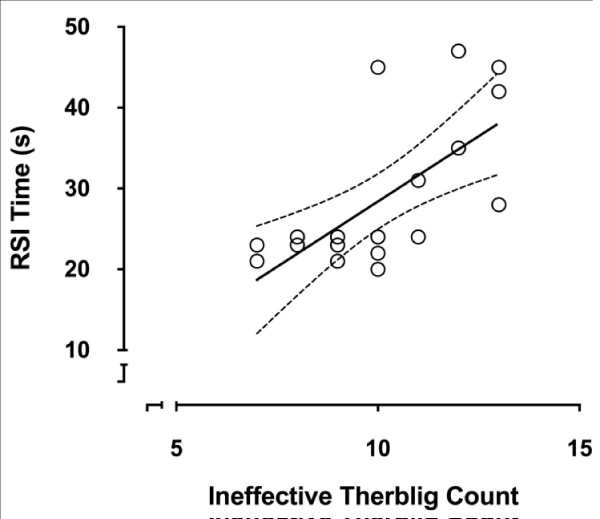International Journal of Anesthetics and Anesthesiology
Time and Motion Study Assessment of Simulated Rapid Sequence Intubation
Trung Du3, David Bramley2, Justin Nazareth3 and David T Andrews1,4*
1Department of Anaesthesia and Pain Management, Royal Melbourne Hospital, Parkville Australia
2Department of Anaesthesia and Pain Management, Western Hospital Footscray, Australia
3Department of Anaesthesia and Pain Management, Royal Children's Hospital, Parkville, Australia
4Department of Anaesthesia, Perioperative and Pain Medicine Unit, The University of Melbourne, Parkville, Australia
*Corresponding author: David T. Andrews, Clinical Associate Professor, 4Department of Anaesthesia, Perioperative and Pain Medicine Unit, The University of Melbourne, Parkville, Australia, E-mail: david.andrews@heartweb.com
Int J Anesthetic Anesthesiol, IJAA-1-018, (Volume 1, Issue 3), Reserach Article; ISSN: 2377-4630
Received: December 02, 2014 | Accepted: December 23, 2014 | Published: December 29, 2014
Citation: Trung D, Bramley D, Nazareth J, Andrews DT (2014) Time and Motion Study Assessment of Simulated Rapid Sequence Intubation. Int J Anesthetic Anesthesiol 1:018. 10.23937/2377-4630/1/3/1018
Copyright: © 2014 Trung D, et al. This is an open-access article distributed under the terms of the Creative Commons Attribution License, which permits unrestricted use, distribution, and reproduction in any medium, provided the original author and source are credited.
Abstract
We carried out an observational study using a system of time and motion analysis that was developed to critically evaluate work systems by correlating the number and type of hand and equipment movements that were associated with the time taken to perform the stereotypical anaesthetic technique of rapid sequence intubation (RSI). The number and type of hand movements required to complete RSI exhibited significant correlation with, and were linearly related to, the time taken to carry out the RSI procedure. RSI time was 24[23-35]s and was associated with number of total hand movements of 56[48-59] and number of inefficient hand movements of 10[9-12] (median[interquartile range]). There was significant correlation relating number of hand movements and total RSI time (R=0.53, P=0.011), which exhibited a linear relationship (F(1, 17)=6.4, P=0.021, R2=0.28). There was also a significant correlation relating number of inefficient hand movements and total RSI time (R=0.67, P=0.001) which exhibited a linear relationship (F(1, 17)=13.7, P=0.002, R2=0.45). In a multiple regression model, both total number and number of inefficient hand movements together significantly predicted RSI time (F(2, 16)=11.7, P=0.001, R2=0.59). In the same model, both variables were also found to independently predict RSI time, P=0.029 and P=0.003 respectively. Based on the observed data we offer a technique to reduce variations in hand and equipment movement in order to facilitate RSI.
Keywords
Rapid sequence intubation, Time and motion studies
Introduction
Time and motion studies were originally pioneered by Frederick Winslow Taylor and Frank Gilbreth in the 1920s in order to simplify physical processes such as bricklaying and typewriting [1]. It is a methodology that seeks to reduce complex processes into component parts, and then reorganise them in order to reveal a more efficient method of working [2,3].
Similar approaches have been applied to business and management problems. The promise of time and motion studies is operational efficiency. By dissecting complex tasks and into simpler units, and then optimising their performance, whether it be through increased training, out-sourcing, or changing the order in which the process is constructed, a new more productive method may be achieved. As such, time and motion study technique have largely been employed to optimise assembly line processes, or organisational structures. Subsequent applications to improve healthcare delivery systems include; determining the impact of electronic health records in a primary care setting [4], designing an effective tool for the assessment of operative procedures [5], and improving instrument handling during surgery [6].
Time and motion studies of anaesthetists' work have primarily sought to assess how much time is consumed with non-patient centred activities, and how that burden can be alleviated [7,8]. Using this methodology, this study aims to analyse the specific task of simulated rapid sequence intubation (RSI). We therefore used time and motion study in order to evaluate the subsequent hand and equipment movements that occur during a series of manikin based RSIs performed by anaesthetists and anaesthetic trainees with the assistance of an anaesthetic nurse. The null hypothesis was that there is no relationship between the number of hand movements and the time taken to complete a simulated RSI.
Methods
After Institutional ethics approval was obtained, anaesthetic trainees, consultants, and anaesthetic nurses working in the department of anaesthesia over a two-day study-period were invited to participate. Written informed consent was obtained from a total of 19 anaesthetists and senior anaesthetic registrars.
Participants were given written information explaining that they were to be video-recorded in a simulated situation. They were asked to perform RSI on a model manikin with a clinical scenario simulating a fit young male with acute appendicitis. They were also given information that the patient had an airway that would allow easy direct endotracheal intubation. The clinical scenario was described as an emergent situation, and that rapid (as opposed to routine) intubation and ventilation were indicated. Participants were not explicitly informed that they were being timed, nor that their hand movements were being recorded, however written consent for the study required that participants agreed to an analysis of their technique.
The initial operating room layout was similar for all participants. Once inside the operating room, participants were given an opportunity to ask questions, familiarize themselves with the local environment, and to make changes to the layout if they felt uncomfortable with how the room or equipment was presented to them.
An intubating manikin head (Trucorp AirSim Airway Model AA11100, Belfast N. Ireland) was set up so that the Cormack–Lehane laryngeal view at endoscopy was assessed as grade I when using a size 3 Macintosh blade via direct laryngoscopy. All participants were required to intubate the manikin using the same grade 3 Macintosh blade via direct laryngoscopy utilizing a size 8.0 endotracheal tube without the use of a stylet or intubating bougie.
A pre-recorded dialogue was used to guide the participants through the simulation. Certain patient and monitoring responses could not be simulated by the manikin, and for this reason, explicit dialogue was used in these circumstances to indicate that critical milestones during the RSI procedure had been successfully achieved.
These were,
1. "Pre-oxygenation is adequate".
2. "Intravenous induction agents have been administered. The patient has closed their eyes and is now asleep".
3. "Succinylcholine has been administered, the patient has finished fasciculation".
Nine clinically relevant stages were identified and set out in the written material that was provided to each participant prior to performing RSI under simulated conditions. These were,
| 1. Move face mask and circuit to new location |
| 2. Accept laryngoscope |
| 3. Position manikin's head |
| 4. Use laryngoscope |
| 5. Intubate manikin |
| 6. Dispense with laryngoscope |
| 7. Retrieve face mask and circuit then disconnect |
| 8. Reconnect circuit to endotracheal tube |
| 9. Retrieve bag and deliver first breath. |
The selection of these clinical stages was based on clinical relevance, and the ease of identification of these time points in the video recordings. Each stage was previously identified during a pre-trial feasibility assessment (data not shown). Completion of the RSI procedure was defined at the time point when correct tube placement was confirmed by successful insufflation of the manikin's lungs.
Video recordings were taken on an iPhone 4 (Apple Inc. Cupertino, CA USA) that was afixed to a stationary IV pole. A standardised field of view was established in order to capture all hand and equipment movements, but to avoid revealing the identity of the participant. The video recordings commenced with the playback of the pre-recorded dialogue and ceased with the insufflation of the manikin's lungs.
Each video was analysed using the time and motion analysis system as originally defined by Gilbreth et al [2]. This system defines 18 elemental movements called "therbligs" which can be divided into efficient and inefficient components (Figure 1). Efficient therbligs are defined as those that directly advance the progress of work, while inefficient ones are those that do not improve such progress. Consequently, elimination of inefficient therbligs is considered to result in faster and more effective motions. For each participant, the total number of therbligs, as well as the number of inefficient therbligs was quantified for each of the nine predefined stages of RSI. Therblig sequences were also analysed for the presence of any patterns. Analysis was completed by two independent investigators following off-line review of each participant's video record. If there was significant disagreement between investigators (more than 30% of number of therbligs), then a third investigator analysed the video recording. Data that consistently disagreed by greater than 30% between all three investigators was excluded from analysis; otherwise, the two closest data points were averaged.

Figure 1: Therbligs Therbligs marked with "*" indicate inefficient hand movements.
View Figure 1
Statistical Analysis
All data was checked for normality using Q-Q plots and the Shapiro-Wilk test. All results are presented as (median and interquartile range). Non-normal data was log-transformed where appropriate. Correlation of number of therbligs and time were calculated with Pearson product-moment correlation. Linear regression was used to establish a separate relationship between total therblig count and RSI time and inefficient therblig count and RSI time. Multiple regression was then used to determine whether total therblig count and inefficient therblig count were independent predictors of RSI time. Probability values of P< 0.05 were considered statistically significant at a one-tailed level, as it was considered that time to complete the RSI procedure would increase with increased number of therblig movements. Statistical analysis was performed using IBM® SPSS® Statistics version 21.0.0.0 (IBM, New York, USA).
Results
No participant accepted the invitation to make changes to the operating room layout or to seek additional equipment for intubation. No participant failed to intubate the manikin, and all participants successfully intubated the manikin on the first attempt.
The total number and type of therbligs associated with each of the 9 clinically relevant stages required to perform the RSI procedure, for all 19 participants, are illustrated in Figure 2. Time rankings, in ascending order, for RSI, as well as the associated number of therbligs (total and inefficient) are shown for each participant in Table 1.
![]()
Table 1: Ranked time (s) to complete RSI procedure.
View Table 1

Figure 2:Histogram of number and type of therbligs
The frequency with which various therbligs occur at various stages of the
intubation process. Light shaded columns indicate efficient therbligs (those
that do move the process forward); dark shaded columns indicate inefficient
therbligs (those that do not move the process forward). Numbers 1 - 9 indicate
the 9 clinically relevant stages that comprised the simulated RSI procedure
(see text for details). Therblig abbreviations: Tl - transport loaded, Rl - release
load, S - search, F - find, G - grasp, H - hold, Te - transport empty, A -
assemble, Rl - release load, U - use, D - disassemble, P - position.
View Figure 2
A correlation relating the time to complete the RSI and the total number of therbligs required for the procedure was detected at a one tailed level (R = 0.53, P = 0.011). Furthermore, these two parameters demonstrated a linear relationship (F(1, 17) = 6.4, P = 0.021, R2 = 0.28) (Figure 3). A correlation relating the time to complete the RSI and the number of inefficient therbligs associated with the procedure was detected at a one tailed level (R = 0.67, P = 0.001). These two parameters also demonstrated a linear relationship (F(1, 17) = 13.7, P = 0.002, R2 = 0.45) (Figure 4). Multiple regression was used to predict RSI time from total number of therbligs and the number of inefficient therbligs measured for each participant. Together these variables were statistically significant predictors of RSI time (F(2, 16) = 11.7, P = 0.001, R2 = 0.59). In the multiple regression model, both total number of therbligs and the number of inefficient therbligs independently predicted RSI time (P = 0.029 and P = 0.003, respectively).

Figure 3: RSI time plotted against total therblig count Linear regression (mean + 95%CI) of total number of therbligs required to perform RSI procedure and time to complete RSI (s), (F(1, 17)=6.4, P=0.021, R2=0.28).
View Figure 3

Figure 4: RSI time plotted against inefficient therblig Linear regression (mean ± 95%CI) of number of inefficient therbligs associated with performing RSI procedure and time to complete RSI (s), (F(1, 17)=13.7, P=0.002, R2=0.45).
View Figure 4
Discussion
This study applied a time and motion methodology to evaluate and quantify the movements required to complete a complex interventional task associated with anaesthesia practice. The key findings demonstrate that there is a positive linear relationship between the time taken to carry out a simulated RSI procedure, involving the intubation of a manikin by a group of specialist anaesthetists and anaesthetic trainees, and the number and type of hand movements observed during the procedure. This supports the study hypothesis that RSI time would be related to number and type of hand movements.
The analysis of the manual processes involved in RSI revealed significant variability of therbligs for some composite movements and considerable conservation for others. For instance, composite movements 1, 4 and 6 (move face-mask and circuit to new location, use laryngoscope, and dispense with laryngoscope, respectively) contained a highly conserved number of therbligs, common to all participants, with little variability and the presence of no inefficient movements. In contrast, composite movements 2,3,5,7,8 and 9 (accept laryngoscope, position manikin's head, intubate manikin, retrieve face mask and circuit then disconnect, reconnect circuit to endotracheal tube, and retrieve bag and deliver first breath, respectively) all contained a greater number and higher variability of therbligs, and included a significant quantity of inefficient movements in each breakdown (Figure 2). Furthermore, the composite movements that contained small variation in therblig number were found in the sequences of manual handling that occurred up to and including intubation. Many of these pre-intubation stages had identical therblig sequences for the majority of the participants. Conversely, there was a much greater variation in the sequencing of therbligs from the point of completion of intubation to completion of RSI. As such, in this study, it was the differences in manual handling practices seen to occur after intubation that had a greater impact on the time to complete RSI than those that occurred pre-intubation.
The number of inefficient movements was linearly related to the time taken to perform RSI. As such, by reducing the number of inefficient movements, it may be possible for a practitioner to improve workflow efficiency and reduce RSI time. This hypothesis requires testing in subsequent studies.
The methodology used in this study provides an opportunity to critically evaluate one specific complex movement associated with anaesthetic practice; however it could be equally applied to other manual processes in anaesthesia such as placement of neuraxial block, insertion of central venous access, or the placement of a patient in the prone position. It may play a role not only in quantifying the relationship between hand movements and time, but also create a more efficient way of performing such tasks. In this particular case, the execution of rapid RSI has application in clinical practice. For example, brief episodes of low brain PO2 during traumatic brain injury have a cumulative effect on patient outcome [9-12] and in such situations, the institution of rapid and effective airway management, with a reduction in unnecessary hand and equipment movements may have perceived clinical benefit.
The limitations of this study are as follows. Therbligs are not equally time weighted, movements such as "seek" and "find" take less than a second to achieve, but contribute to the final therblig count to the same degree as the therbligs "transport loaded" or "hold," for which execution-time is considerably longer. Similarly, bi-manual activities lead to the same therblig being replicated and counted for each hand. Hence, in situations in which therbligs were performed with one hand, such as "hold" or "disassemble," those participants that used both hands, although being less efficient, accumulated a higher therblig count without necessarily taking twice the amount of performance time.
The video recording technique used in this study made it difficult to observe the eyes of the participants, therefore therbligs such as "seek" and "find" were largely inferred in most cases. Both blinded data assessors agreed to attribute these therbligs only where it was clear that progress was not possible without locating the next item in the process. In contrast, therbligs were not inferred in cases where items were handed into the waiting grasp of the participant.
The same anaesthetic assistant was not available for all episodes of simulated RSI. The assistance rendered by the various anaesthetic assistants was not formally analysed, but was prompt and consistent with little variability between participants. This may be a confounder for longer RSI times and slower performance in some cases. Nevertheless, the RSI procedure requires assistance in clinical practice, and the simulated RSI in this study was designed to mirror normal clinical events. Moreover, assistants that are unfamiliar with RSI are encountered in some situations, such as those seen outside of the normal operating room environment.
The ease by which the endotracheal tube was inserted into the manikin varied between participants. Some participants appeared to require more force, sometimes using a prolonged screwing action to intubate the patient once they had placed the endotracheal tube at the glottis inlet of the manikin. This occurred despite the fact that manikin-specific silicon lubricant spray was applied equally to outside of the endotracheal tube before each episode of intubation. However, this is unlikely to have affected the results, as the intubation time did not contribute significantly to overall RSI time. Observed differences in RSI time were mainly due to variability in manual processes post-intubation such as the time taken to initiate ventilation following insertion of the endotracheal tube. Furthermore, similar difficulties are often encountered in live subjects during intubation. Finally, this single institution study was conducted in a simulated scenario and was mannequin based and therefore the observations and results may not fully reflect current clinical practice of RSI.
This study provides a scientific means for the breakdown and analysis of a complex manual procedure in anaesthesia practice. By quantifying component movements, the exploration of a more time-efficient and effective way of performing a task can be introduced. To this end, from the observed variations and patterns in hand movements during RSI, we suggest that intubation and completion of RSI may be facilitated with the following 7 points:
1. The laryngoscope is pre-assembled and in hand prior to initiating the RSI;
2. Only the left hand is used when handling the laryngoscope;
3. There is no attempt to disassemble or return the laryngoscope to its original location after intubation;
4. The facemask, bag and circuit are kept in the field of view and are therefore readily accessible, negating the need to search for them;
5. The facemask and circuit are placed on the left hand side of the patient and disconnected single-handedly;
6. The APL valve is engaged after pre-oxygenation, but prior to initiating the RSI;
7. Clear communication occurs between the doctor and the assistant, with the use of explicit instructions about equipment, timing and type of assistance.
In conclusion, by employing a novel methodology for the analysis of RSI, we found a significant correlation between the total number and type of therbligs and the total time to complete RSI. More specifically, RSI time was linearly related to the total number of therbligs and the number of inefficient therbligs associated with the procedure.
By observing a series of anaesthetists performing RSI, we identified a number of manual practices that may allow more rapid intubation, and completion of RSI. Further investigation is necessary to determine the clinical utility of these findings.
Funding
This study was funded by the Department of Anaesthesia and Pain Management, Western Hospital.
Author Contribution
T.D. - Study design, participant recruitment, analysis and collection of data, drafting of manuscript, approval of final copy.
D.B. - Study design, participant recruitment, data collection, approval of final copy.
J.N. – Analysis and collection of data, approval of final copy
D.T.A. - Drafting of manuscript, statistical analysis, approval of final copy.
Acknowlegements
This study was conducted in 2011 at the Western Hospital, Gordon St, Footscray, VIC, 3011, Australia. The authors would like to thank Kirsti Palmer for assistance with manuscript preparation.
References
-
Gilbreth F (1909) Bricklaying System Myron C, Clark Publishing Co. New York and Chicago
-
Gilbreth F, Gilbreth L (1924) Methods of Analyzing Work into Seventeen Subdivisions. Management and Administration 7: 151-154.
-
Gilbreth F, Gilbreth L (1924) Applications of Motion Study. Its Use in Developing Best Methods of Work. Management and Administration 7: 295-297.
-
Pizziferri L, Kittler AF, Volk LA, Honour MM, Gupta S, et al. (2005) Primary care physician time utilization before and after implementation of an electronic health record: a time-motion study. J Biomed Inform 38: 176-188.
-
Dosis A, Aggarwal R, Bello F, Moorthy K, Munz Y, et al. (2005) Synchronized video and motion analysis for the assessment of procedures in the operating theater. Arch Surg 140: 293-299.
-
Baumgart A, Neuhauser D (2009) Frank and Lillian Gilbreth: scientific management in the operating room. Qual Saf Health Care 18: 413-415.
-
Kennedy PJ, Feingold A, Wiener EL, Hosek RS (1976) Analysis of tasks and human factors in anesthesia for coronary-artery bypass. Anesth Analg 55: 374-377.
-
McDonald JS, Dzwonczyk RR (1988) A time and motion study of the anaesthetist's intraoperative time. Br J Anaesth 61: 738-742.
-
The Gilbreth Network (2000) Ferguson D: From http://gilbrethnetwork.tripod.com/therbligs.html,. Accessed July 2014.
-
Krenn M: From scientific management to homemaking: Lillian M (2011) Gilbreth’s contributions to the development of management thought. Management and Organizational History 6: 145-161.
-
McDonald JS1, Dzwonczyk R, Gupta B, Dahl M (1990) A second time-study of the anaesthetist's intraoperative period. Br J Anaesth 64: 582-585.
-
Oddo M, Levine JM, Mackenzie L, Frangos S, Feihl F, et al. (2011) Brain hypoxia is associated with short-term outcome after severe traumatic brain injury independently of intracranial hypertension and low cerebral perfusion pressure. Neurosurgery 69: 1037-1045.





